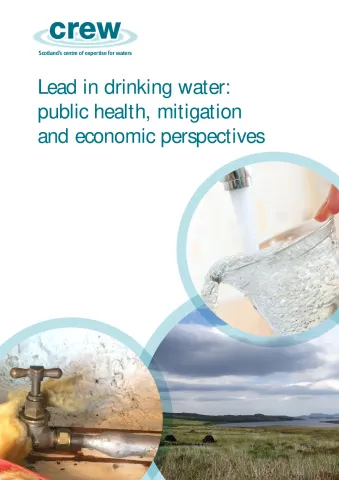Lead pipes and plumbing components such as lead-solder and brass fittings can contaminate drinking water on its route from the water mains to the premises and pose a public health risk. Exposure to lead in tap water is entirely preventable but challenging to achieve. To contribute to a better understanding of these challenges, this report reviews evidence on the public health, mitigation and economic perspectives of lead in drinking water in Scotland and internationally. The main document is supported by an extensive literature review in the Appendix detailing evidence on lead sources and health effects in Scotland and internationally, factors influencing lead levels in drinking water, and the water lead-blood lead relationship.
| Attachment | Size |
|---|---|
| CD2016_03 Main Report | 1.73 MB |
| CD2016_03 Annex | 964.41 KB |
